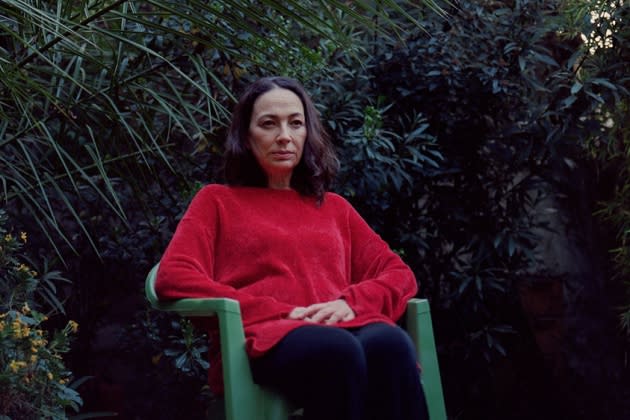Sanfic Industria Winner ‘Una Luz Negra’ Ponders the Mysteries of Memory and Grief

In his feature debut, which has just proved the biggest winner at Sanfic Industria’s 2022 Work in Progress strand, Chilean writer-director Alberto Hayden explores what has been almost an obsession with him. Inspired by the musings of South Korean-born philosopher Byung-Chul Han and his French counterpart Deleuze, Hayden questions whether people continue to exist past their physical selves through people’s memories of them, their photos, the possessions they have left behind or in this digital age, their social media imprint.
“Una Luz Negra” (“A Dark Light”) is among the 10 Work in Progress (WIP) titles participating at Chilean industry forum, Sanfic Industria. It ponders these questions in a story of two people. She is Josefina (56) and he is Jorge (45). She has contacted him because four years ago, she lost her son who bears his exact same name, Jorge Ferrer Buriard. The coincidence is all the more unusual because the surname Buriard is uncommon in Chile and there is an uncanny physical resemblance. Transfixed by the photos of this young man whose life was cut short at age 20, Jorge starts investigating online and through the social media accounts of Josefina’s son. Meanwhile, her son begins to haunt Josefina and his presence, manifested through sounds in the house, grows ever more unsettling.
More from Variety
Romulo Sulca Ricra Set to Follow 'Once Upon a Time in the Andes' with 'Ayahuanco' (EXCLUSIVE)
Sanfic Industria Signals Robust Growth in Latin American Film and TV
A graduate in film direction from the Chilean Film School, Hayden has made several short films and a documentary, “Pangea,” which had its world premiere at the Guadalajara Film Festival. “Una Luz Negra” is produced by Joaquin Echevarria of Brisa Films (“Aqui no ha pasado nada”) and Benja Pinto.
Hayden spoke to Variety about the shoot, why he shifted points of view and what he’s working on next:
How did you arrive at the title “A Dark Light”?
The title rises from the paradoxical idea of something that shines despite its darkness, of something that emits a presence despite its absence. It also has to do with what lies in the shadows, what does not come to the light, the mysterious. And I link that, above all, to death. In fact, we tried to make the film progressively more chiaroscuro and it gradually got darker in visual terms.
Tells us why you chose to switch points of view midway, first through Jorge’s experience and later Josefina’s.
The first part focuses on Jorge’s attempts to dig into whether they were related somehow as he searches online and through the young man’s social media accounts. It then shifts thematically and tonally, becoming more of a genre film as Josefina feels her son’s presence in the house. The intrigue of possible lost family ties, begins to be more about mourning and the relationship with death. There are unexplained sounds but no ghostly appearances. It remains grounded in reality.
This being your first feature, how did the actual shoot go?
We were a small group, which kept us more flexible. We had only a handful of actors, and two main locations in Santiago. It was a true collective effort, and everyone’s input was welcome, from the costume designer to the art director. We shot in 11 days late last year so we still had to follow COVID-19 health protocols.
We got some support from Chile’s audiovisual fund for micro-budget projects so we still need post-production and distribution support as well as a sales agent.
What’s your next project?
It’s a sci-fi film titled “Glaciers” – with no special effects – about an elderly couple who decide to thaw their seven-year-old son who they had cyber frozen 40 years ago. It’s a reflection on the human desire to maintain life at all costs.
Best of Variety
From 'The Sandman' to 'Blonde': Books Made Into Movies and TV Series That You Should Read
Jennette McCurdy's Provocative Book 'I'm Glad My Mom Died' Is Already a No. 1 Bestseller
Sign up for Variety’s Newsletter. For the latest news, follow us on Facebook, Twitter, and Instagram.
